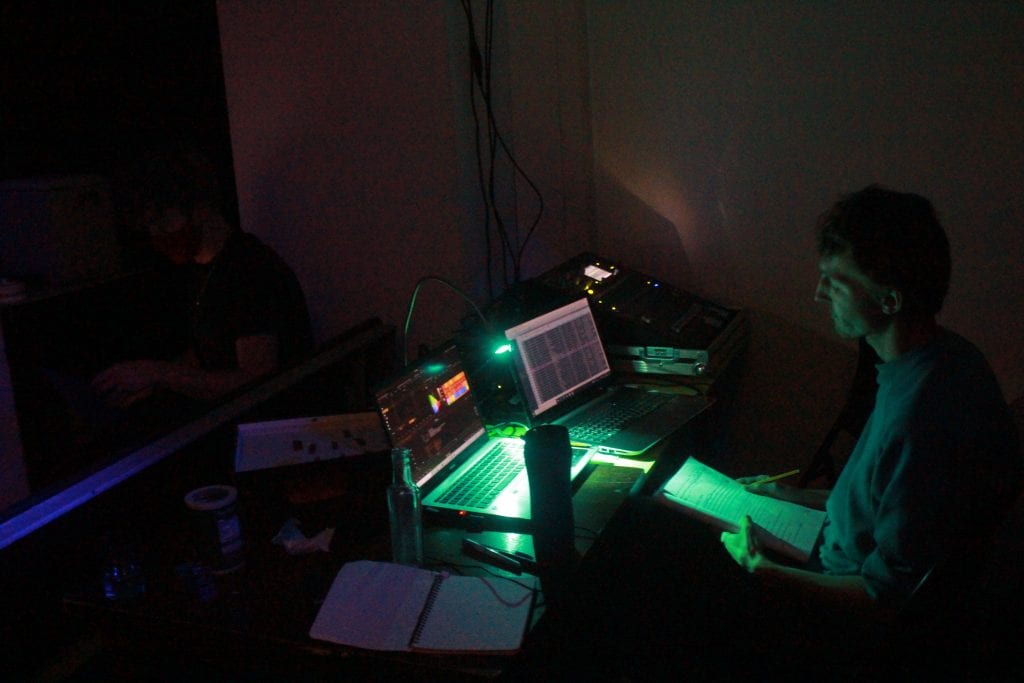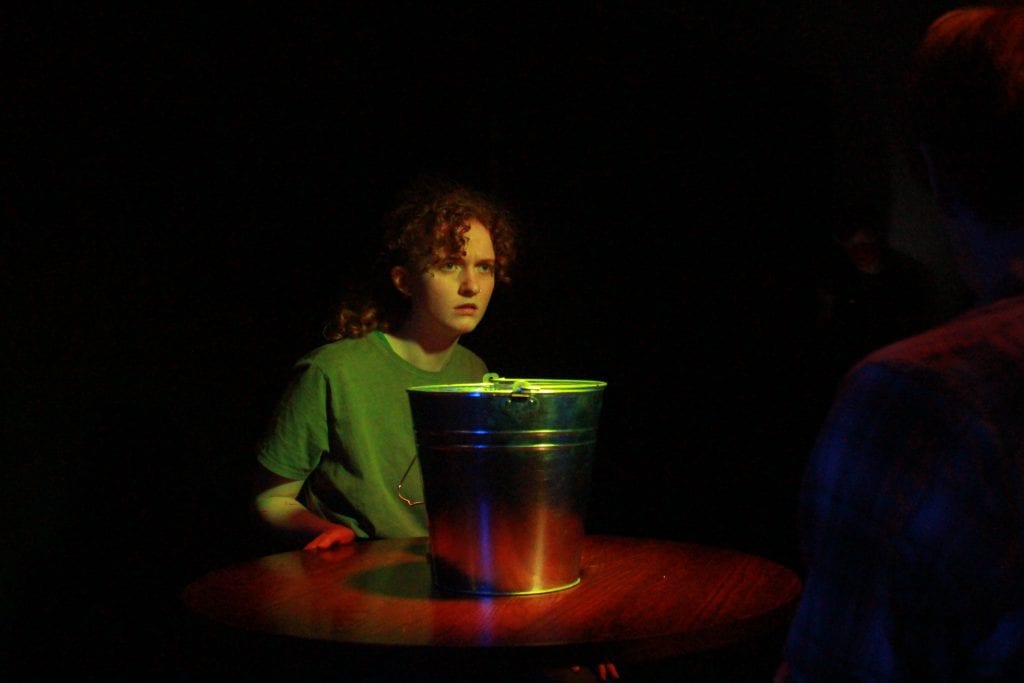It was not an easy road to put on The Hunger. The Sheffield-based production took place at the DINA theatre between June 21-23 and faced a number of setbacks in its production process. The Hunger, a brand new original piece of theatre by co-director Madeleine Farnhill follows mother Deborah (portrayed by Susannah May) and daughter Megan (portrayed by Ellen Trevakiss) pair in a post-apocalyptic 1986 Yorkshire.
Co-director Helen Denning discussed how the COVID-19 lockdown shaped the production process and the show itself, requiring the actors to delve deeper into the characters without a physical rehearsal space.
“We were able to achieve far more during this process than we ever thought would have been possible, and were able to focus heavily on character building and backstories,” Denning said. “This put us in a wonderful position when we could finally meet to leap straight into the blocking of the show, aided by the hard work and commitment to line learning of our actors Susannah May and Ellen Trevaskiss.”
The cast rehearsed over Zoom for three months, an experience no one involved in The Hunger had done before. The actors had not rehearsed—or even met—in person until May.

To make matters even more difficult, four days before opening night, set and lighting designer Jonathan Payne went into isolation after coming into contact with someone with COVID-19. Payne had to program the lighting for the show from his home, arranging changes that would happen instantaneously.
However, the pandemic did not only influence the production of The Hunger; the entire show is centered around an on-stage pandemic. The disease that ravages the world of The Hunger was inspired by the BSE (Mad Cow Disease) epidemic in the 1980s.
Farnhill added that the “growing awareness and urgency about our impact on the planet, especially in the younger generations” played a role in the ideation process as the unnatural heat that arises in The Hunger is a stand-in for climate change.
“There are some unfortunate parallels to the current pandemic we find ourselves in today,” Farnhill said. “As a post-apocalyptic story, I was allowed to take this idea to its very extreme. I think if there were to be anything that an audience can take away from the play regarding the climate conversation, it would be to really think about our relationship with the animal world.”
This theme comes head-on in The Hunger through the character’s relationship with one another and the post-apocalyptic situation they are thrown into, but also in their relationship with Yorkshire.

Northern England is not often depicted in theatre and Farnhill, a Yorkshire native, wanted to reflect her roots within “The Hunger.” She emphasized that “Northern England has often been left behind,” and a solution to this is telling rich Northern stories and presenting authentic narratives that reflect the people who live there while highlighting its unique scenery. The rural landscape of Yorkshire allowed May and Trevakiss to delve deeper into the isolation and claustrophobia Deborah and Ellen experience.
“I couldn’t help but notice that a lot of the fiction I was reading and watching was not only very male-centric but quite America-centric too, and so the concept of setting a story like that in the English countryside with female leads presented some really interesting opportunities.
“I feel that the Yorkshire landscape in particular quite naturally lends itself to the genre—it’s bleak, dramatic, obviously very beautiful, but if you were to get lost I think you could convince yourself quite easily that you might be the only thing left alive,” Farnhill said.
She described how she “felt a duty” to represent Yorkshire authentically through the characters, settings, and themes addressed within “The Hunger.” Farnhill underscored the “warmth and toughness” of those from Yorkshire and how that influenced Deborah’s character.

As a writer, Farnhill highlighted the importance of not only telling the stories of Northern England but accurately depicting the complicated, protective, hardened but loving women that call Yorkshire home.
The farmhouse in which “The Hunger” takes place, a traditionally feminine space resided in by a mother and daughter pair, becomes “a site of quite abject horror” as the show continues, presenting the duality of women through the scenery as well.
However, Farnhill’s observations about the lack of multi-dimensional female-led theatre are not solely reflected in Yorkshire-based theatre but also in the post-apocalyptic genre in general. Too often, she felt, post-apocalyptic fiction relegated women to submissive roles, if they are even included in those narratives.
“I just wanted to put women at the forefront of a story that usually excludes or dehumanises them,” she said.
While “The Hunger” sold out its original run, the theatre could only accommodate 50% capacity due to COVID-19 restrictions. Denning said that “the pandemic has been a harsh reminder of how difficult pursuing a career within the arts can be,” as there is a lack of stability in terms of finances, jobs, and performance space.
Moving forward, Denning and Farnhill hope to show “The Hunger” in more locations and hinted at a possible production at the Edinburgh Fringe Festival, and even a tour. However, the production team is still in the planning process for all future steps.
Words by Elizabeth Karpen.
Support The Indiependent
We’re trying to raise £200 a month to help cover our operational costs. This includes our ‘Writer of the Month’ awards, where we recognise the amazing work produced by our contributor team. If you’ve enjoyed reading our site, we’d really appreciate it if you could donate to The Indiependent. Whether you can give £1 or £10, you’d be making a huge difference to our small team.
